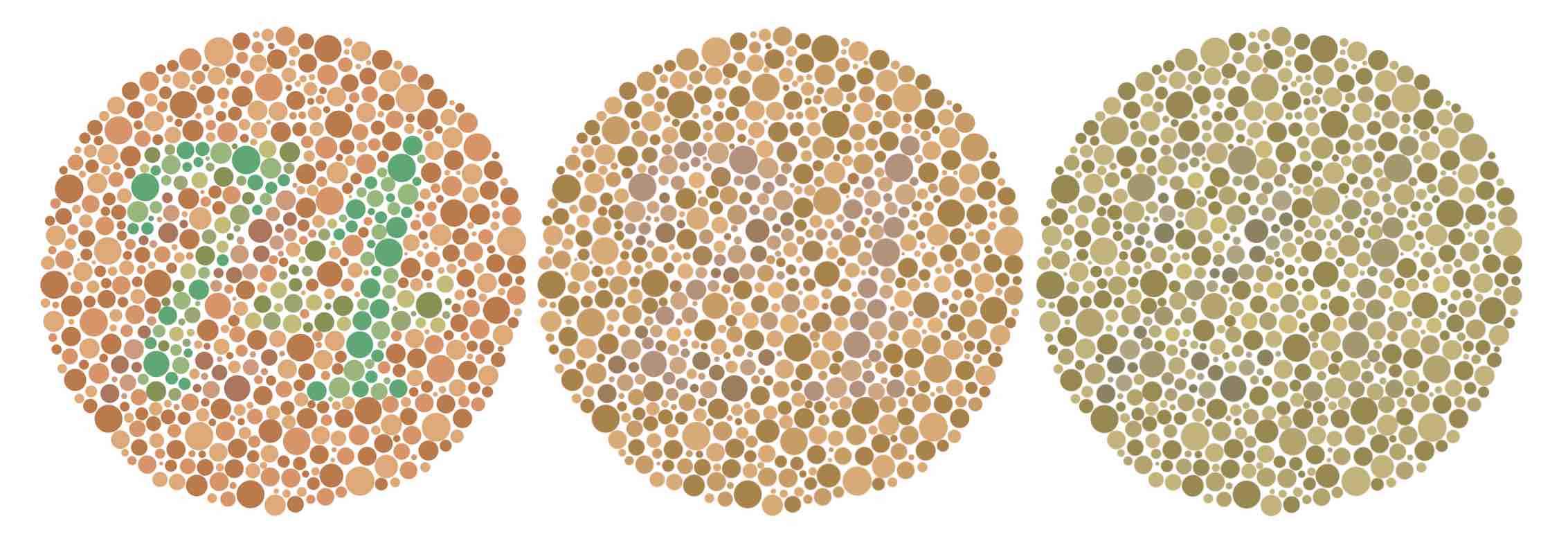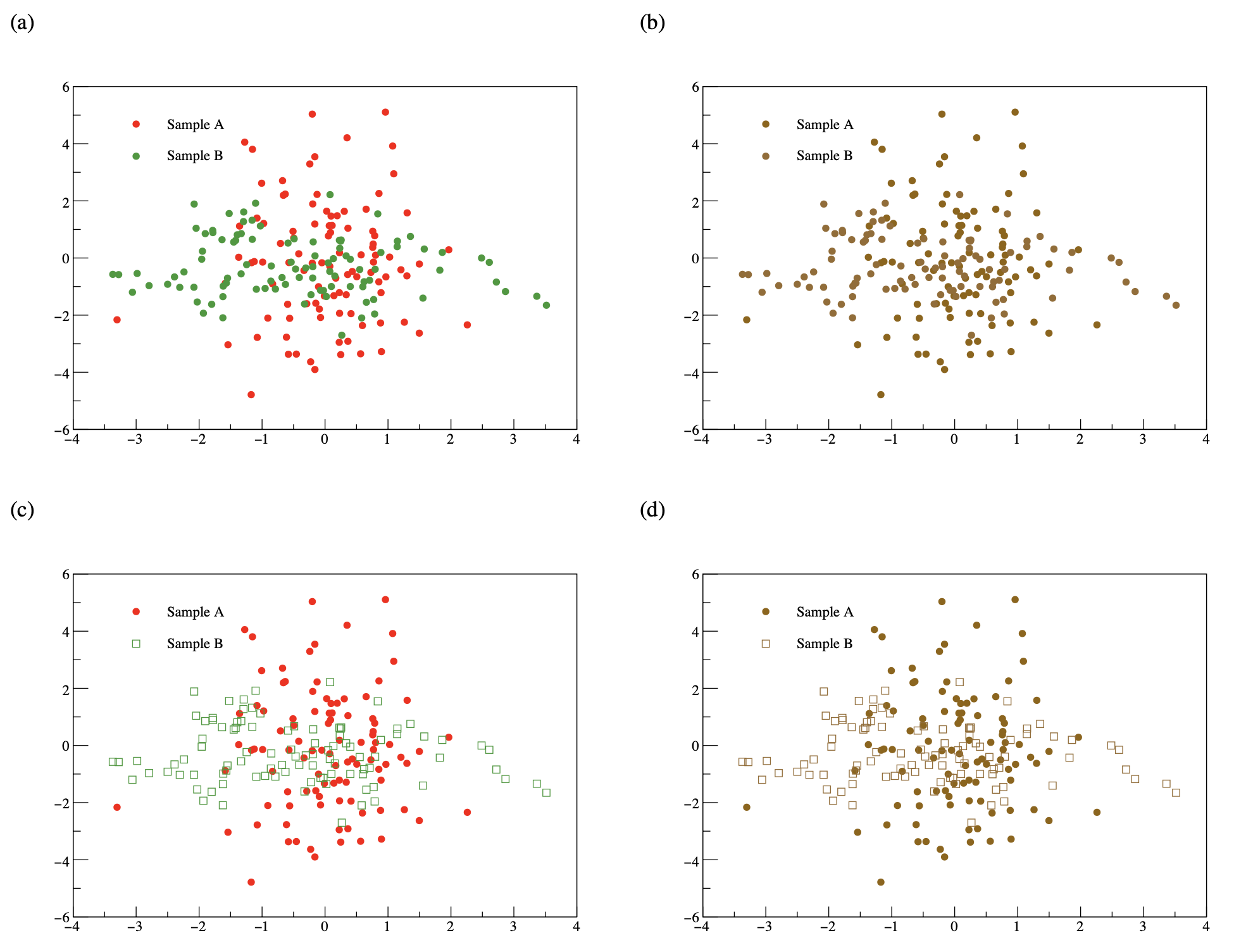Color Blindness (Color Vision Deficiency, CVD)
Color blindness, also known as color vision deficiency (CVD), is a visual condition characterized by the inability or difficulty to perceive certain colors or color differences accurately. It is a sort of diversity of human bodies, which is similar to the difference between right-handed and left-handed persons. The most common type of CVD is difficulty in distinguishing between red and green colors. There are estimated to be a few hundred million people with different types of CVD all over the world.

"Ishihara plate" examples viewed in three different color vision types; Non-color blind vision (left), Deuteranopia (center), and Protanopia (right). If you do not have any type of color blindness, you should be able to distinguish the number 74 hidden in the left panel.
The above figure shows how different color visions give different impressions, where the original image on the left panel (taken from Wikipedia) represents vision without color blindness (i.e., majority), while the others are color-blind visions simulated with Sim Daltonism.
This example is rather artificial to emphasize the differences in color vision diversity. However, if we do not pay attention to color vision diversity in our plots, we may produce similar figures accidentally in our research activities.
Color Vision and Science
Let’s look at a more practical example below. This example shows the impact of not selecting suitable colors and marker/line styles for those with different color visions, which can lead to the misinterpretation of the figures. You may be able to distinguish samples A and B in (a), but some may not and it may look like (b).
To avoid this confusion, a proper choice of color and maker/line styles is quite important, and always thinking about the color vision diversity will make your plots color universal.

(a)(b) Scatter plots with a bad color choice, seen with the "normal" vision (a) and red-green confusion (b, simulation). (c)(d) The same plots but with two different marker styles are used.
At ICRC2023, we will organize a diversity session during lunch on Day 3 (July 28). The main topics of the session will be diversity in gender, country, and race. Unfortunately, we will not have a dedicated discussion time for the color vision diversity or color universal design, but it would be great if reading this page could be a first step in making all plots shown during ICRC2023 more color vision friendly.
The Cherenkov Telescope Array (CTA) Observatory (CTAO), the first open ground-based gamma-ray observatory, has taken an important step toward this goal. Dr. Alba Fernández-Barral, Outreach, Education and Communication Officer of the CTAO, wrote excellent guidelines “Best Practices for Colour Blind Friendly Publications & Descriptions” to make CTA plots more color blind friendly.
The local organizing committee (LOC) of ICRC2023 strongly supports her initiative and activity. This page was written to respect the diversity of our community.
Useful Links and Apps